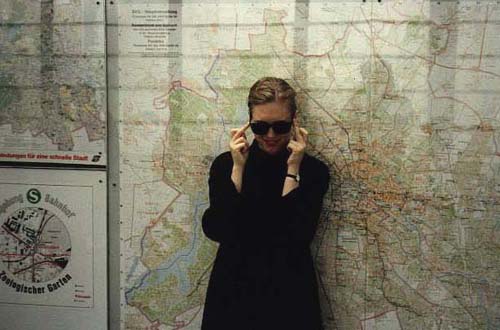In 1986, Berlin was nowheresville.The Prussian imperial capital, the home office of two world wars, had little industry, little commerce , and a fortified concrete wall down its middle. After the second world war it had been divided into four occupation zones - British, French, American, and Soviet - and it still was, although the soldiers that occupied them didn't have much to do any more. The American ones spent much of their time on day passes into communist East Germany, shopping. The city was an ugly duckling, ham-handedly rebuilt after the war with square 1950s architecture. By the 1980s, the concrete was graying and had metal stains running down the sides. The center of the Western part of the city was Zoo station, a nondescript transfer hub drafted into service as a central station when the Berlin Wall went up. To refit it as an actual central station was seen as an admission that the city would remain divided, so it was left to crumble, aqua tiles falling off the walls. |
 At Zoo Station. Wearing all black was fashionable among "alternatives." It also cut down on laundromat visits. |
|
|
Next: On being followed by spies.
Send e-mail to Xander Mellish: xmel _improved @xmel.com
U.S. Copyright Office Registration 1-141735861